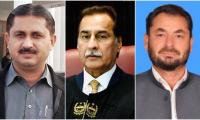The founders of India who set up the state as a secular country intended to house all the groups and factions who lived there. They would probably be shocked by what is happening today. On Wednesday, Indian Prime Minister Narendra Modi himself laid the foundation of the long-disputed Ram Mandir by placing a silver brick at the site where Babri Masjid had stood till 1992. A dispute over the masjid, built in the 1500s, had existed since1800 when it was claimed that the masjid had been built over a temple which marked the birthplace of Lord Ram. The British colonial rulers at the time had temporarily dealt with the matter by fencing off the masjid and allowing the area outside to be used for worship by Hindus. The issue of worship places built over other worship places sas existed for centuries in India with successive waves of rulers commanding various territories across the region.
The latest wave of Hindu nationalism began in the 1980s, when the BJP and its hardline supporters began a new movement to construct the Ram Mandir at the site of Babri Masjid. The masjid was attacked and destroyed in 1992 by a mob led by hardline Hindu elements linked to the BJP. Since then the issue has arisen from time to time and gained ground since the election of Narendra Modi in 2014. Modi has quite openly identified himself as a Hindu nationalist and the manifesto put forward by his party envisages an India meant essentially for Hindus rather than for all groups. It is believed Modi may have opted to go ahead with the rebuilding of the controversial Ram Mandir to coincide with the anniversary of India’s annexation of Kashmir on August 5, 2019.
While India's courts have failed to speak up for a secular India and opposition parties have not opposed Modi’s moves, there has been some criticism from dissidents with India. The media however has largely backed Modi or been forced into silence. The action demonstrates the determination both over Kashmir and the future shape of India. The new map issued by Pakistan, which shows Indian occupied Kashmir as a part of Pakistan, is unlikely to have much impact on Modi’s actions, nor will the voices raised by human rights watchdog bodies. Far fiercer opposition is required from quarters within and outside India. For now, we do not see any signs that it is approaching with even Congress leaders from Ayodhya helping in the building of Ram Mandir.
Representational image. —APP/FileIf you live in Karachi, or anywhere else in Pakistan for that matter, you have...
Screengrab shows X services down in Pakistan. — Geo.tvIt has been two months since social media platform X has been...
Health experts estimate an 8.0 per cent and 5.0 per cent increase in hepatitis B and C related deaths, respectively,...
PTI has managed to carve out a tough-to-defeat position in Pakistan’s politics and polity both
Rain on Sunday alone led to the deaths of 12 people – two in Balochistan, six in Khyber Pakhtunkhwa and four in Punjab
India seems to be following Israel model of carrying out assassinations on foreign soil of people it sees as a threat...







